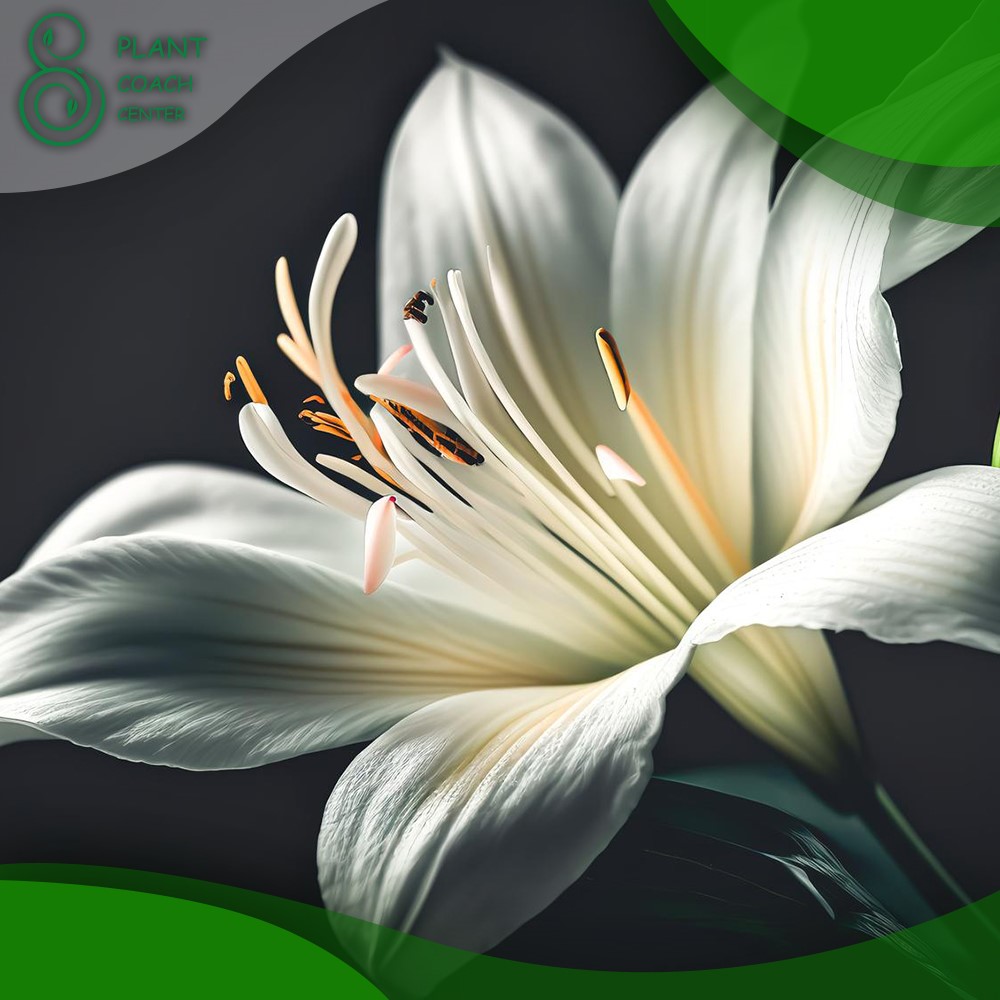When to Cut Back Oriental Lilies
Oriental lilies are exquisite flowering plants known for their stunning blooms and captivating fragrance. These graceful flowers require proper care and maintenance to thrive in your garden. In this comprehensive guide, we will explore the art of plant coaching and address common problems associated with oriental lilies. Understanding when to cut back on these lilies is crucial for maintaining their health and enhancing their beauty.
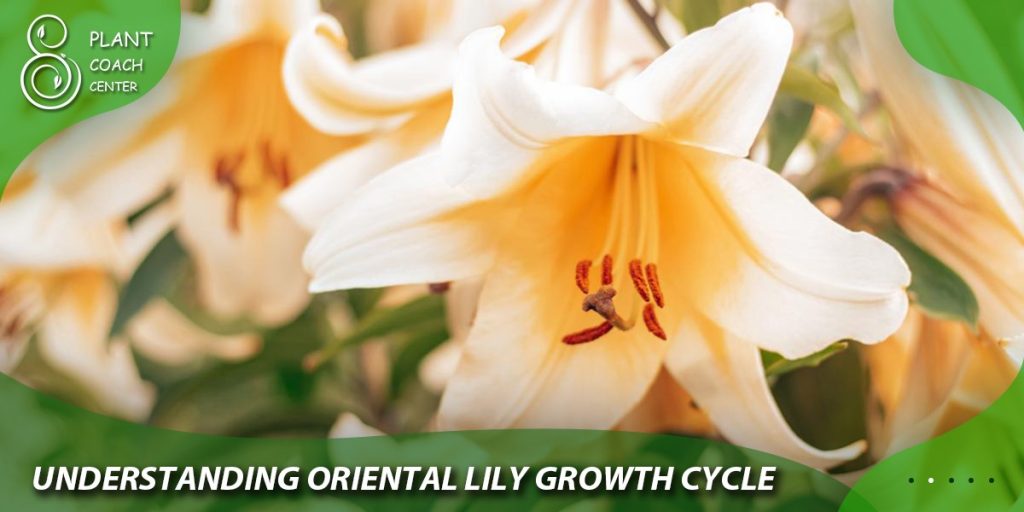
Understanding Oriental Lily Growth Cycle
To effectively care for your oriental lilies, it’s important to familiarize yourself with their growth cycle. Oriental lilies undergo various stages of growth throughout the year, and seasonal changes significantly impact their development. Temperature, light exposure, and soil conditions influence their growth and flowering patterns.
Signs That Oriental Lilies Need Pruning
Regular pruning is an essential aspect of oriental lily care. By recognizing the signs that your lilies need pruning, you can address potential issues and maintain their health and beauty. Here are some common signs that indicate it’s time to cut back on your oriental lilies:
Overgrown or Crowded Appearance
When your lilies start to look crowded or overgrown, it indicates that pruning is necessary. Over time, lilies can produce numerous stalks and dense foliage, impeding airflow and creating a breeding ground for diseases and pests. Selectively cutting back excessive growth can restore balance and allow the plant to thrive.
Withered or Yellowing Foliage
If you notice withered or yellowing foliage on your oriental lilies, it’s a sign that the plant is diverting energy towards dying leaves. This could be due to natural aging or nutrient deficiencies. By pruning away the unhealthy foliage, you encourage the plant to focus on producing new growth and vibrant flowers.
Wilting or Drooping Stalks
When lily stalks start to wilt or sag, it may indicate a lack of water uptake or potential disease. Pruning can help remove infected or damaged sections and promote healthier growth in such cases. Ensure that you examine the stalks carefully to identify any signs of disease, discoloration, or pest infestation before pruning.
Overlapping or Entangled Stalks
Over time, lily stalks can become intertwined or overlap, limiting airflow and increasing the risk of fungal diseases. This is particularly common in oriental lilies with tall, robust growth. By selectively cutting back stalks that are entangled or overlapping, you create space for better air circulation, reducing the chances of disease development.
Finished Blooms and Seedpod Removal
Oriental lilies produce beautiful blooms that eventually fade and develop seedpods. To redirect the plant’s energy towards growth and prevent it from expending resources on seed production, it’s important to deadhead the spent flowers promptly. Removing the seedpods encourages the plant to focus on producing new blooms rather than diverting energy into seed development.
Remember that pruning should be done with care and precision. It is important to assess your lilies’ overall health and growth stage before pruning. Suppose you are unsure whether a particular stalk or foliage needs to be pruned. In that case, it’s best to consult gardening resources or seek advice from experienced gardeners to make the right decisions for your lily variety.
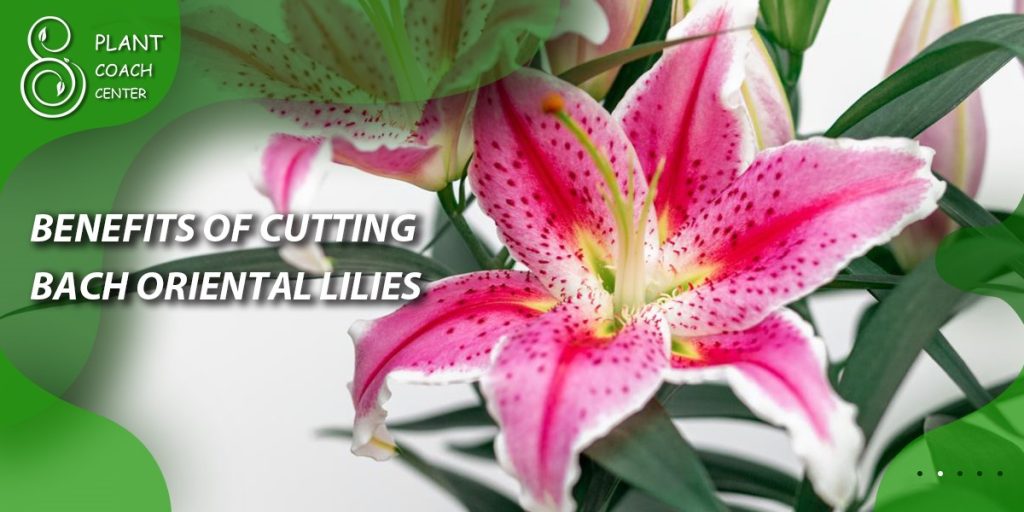
Benefits of Cutting Back Oriental Lilies
Cutting back oriental lilies offers numerous benefits for these beautiful flowers’ overall health, vigor, and aesthetic appeal. By practicing regular pruning, you can enjoy the following advantages:
Enhanced Growth and Flower Production
Pruning oriental lilies promotes vigorous growth and encourages the development of more abundant and vibrant flowers. By cutting back overgrown or crowded foliage, you create space for new shoots to emerge and reach their full potential. This allows the plant to allocate its energy toward producing more visually captivating, more robust blooms.
Reduction of Disease and Pest Risks
Over time, dense and overcrowded foliage can create a favorable environment for diseases and pests to thrive. By selectively pruning and thinning out excess growth, you improve airflow around the plants, reducing humidity and preventing moisture buildup on the foliage.
This, in turn, minimizes the risk of fungal infections and discourages pests from infesting the lilies. Pruning also facilitates easier pest detection, allowing you to identify and address infestations promptly.
Improved Aesthetic Appeal and Plant Health
Well-pruned oriental lilies exhibit a more compact and neat appearance, enhancing the overall visual appeal of your garden. Removing dead or decaying stalks and foliage contributes to a cleaner and more organized look and promotes the plant’s overall health. Pruning eliminates potential hiding spots for pests and disease pathogens, leading to healthier, more resilient plants.
Extended Flowering Period
Oriental lilies typically have a designated flowering period. However, you can extend their blooming season by employing strategic pruning techniques. Removing spent flowers through deadheading redirects the plant’s energy away from seed production and towards producing new blooms. This can result in a more prolonged and abundant display of flowers throughout the growing season.
Enhanced Bulb Health and Longevity
Pruning also plays a crucial role in maintaining the health and longevity of oriental lily bulbs. Removing withered or diseased foliage minimizes the risk of pathogens spreading to the bulbs. Additionally, pruning helps redirect nutrients and resources toward bulb development and storage, ensuring healthier, stronger bulbs for the following year’s growth.
It’s important to note that while pruning provides these benefits, it should be done appropriately and with caution. Over-pruning or improper techniques can stress the plant and potentially hinder its growth. Therefore, it’s essential to understand the specific pruning requirements for oriental lilies and tailor your approach accordingly. By striking the right balance, you can optimize the benefits of cutting back oriental lilies and enjoy a thriving, stunning garden display.

When to Cut Back Oriental Lilies: Timing and Frequency
Knowing when and how often to cut back oriental lilies is crucial for maintaining their health and ensuring optimal growth and flowering. Different pruning techniques are employed at specific times of the year to support their natural growth cycle. Here’s a breakdown of the timing and frequency of cutting back oriental lilies:
Spring Pruning: Preparing for the Growing Season
Before new growth emerges in early spring, it’s ideal for pruning oriental lilies. This is typically done to remove any winter damage, dead or diseased stalks and trim back excessive foliage. Spring pruning sets the stage for the growing season, allowing the plant to allocate its energy toward producing healthy shoots and vibrant flowers. It also helps improve airflow and prevents the accumulation of moisture that can lead to fungal diseases.
This pruning session is also a suitable time to divide overcrowded lily bulbs if needed. Dividing bulbs every few years helps maintain their vigor and prevents overcrowding, which can negatively impact flower production.
Summer Pruning: Maintaining Vigorous Growth
While summer pruning is not as extensive as spring pruning, specific tasks can be carried out to maintain the lilies’ vigorous growth. One important practice is deadheading, which involves removing spent flowers promptly. Removing the faded blooms redirects the plant’s energy away from seed production and towards further growth and flower production. Deadheading also improves the plant’s overall appearance by tidying up the flowering stalks.
Additionally, selective pruning can improve airflow and reduce the risk of diseases if the foliage becomes crowded or excessive. Trim back any yellowing or damaged leaves to maintain the plant’s health and aesthetic appeal.
Fall Pruning: Preparing for Winter Dormancy
In late fall, after the lilies have completed their blooming cycle and the foliage starts to yellow and wither, it’s time to cut back oriental lilies in preparation for winter dormancy. During this time, prune the stalks to ground level, leaving a small stub to mark the plant’s location.
Cutting back the foliage helps the plant conserve energy and redirects its resources toward bulb development and storage. Proper fall pruning also prevents the accumulation of debris around the bulbs, reducing the risk of pests and diseases during the dormant period.
The frequency of cutting back oriental lilies depends on the specific needs of the plants and the desired results. Generally, annual pruning is recommended for oriental lilies to maintain their health and encourage optimal growth and flowering. However, it’s important to assess the plant’s condition each year and adjust the pruning frequency accordingly. If the lilies are experiencing issues like overgrowth, disease, or decline in flower production, more frequent or selective pruning may be necessary.
By following the appropriate timing and frequency for cutting back oriental lilies, you can ensure that the plants receive the necessary care and support throughout their growth cycle, resulting in healthier, more vibrant blooms each season.
Step-by-Step Guide to Cutting Back Oriental Lilies
Proper pruning techniques are vital to maintain the health and vigor of oriental lilies. Here is a step-by-step guide to help you achieve optimal results:
- Assessing Lily’s Health and Growth Stage
Before pruning, examine the overall health of your lilies and identify any specific issues. Consider the growth stage, as it influences the extent of pruning required.
- Gathering the Required Tools and Materials
Collect sharp pruning shears or scissors, gardening gloves, and a clean cloth or disinfectant for sanitizing your tools.
- Proper Techniques for Pruning Lily Stalks and Foliage
Cut back damaged or dead stalks at the base using a diagonal cut. Remove any excessive foliage, focusing on maintaining a balanced shape for the plant.
- Dealing with Bulbs and Corms During Pruning
If dividing bulbs, gently dig them out and separate the individual bulbs, ensuring each has sufficient roots. Replant the bulbs at the appropriate depth in suitable soil.
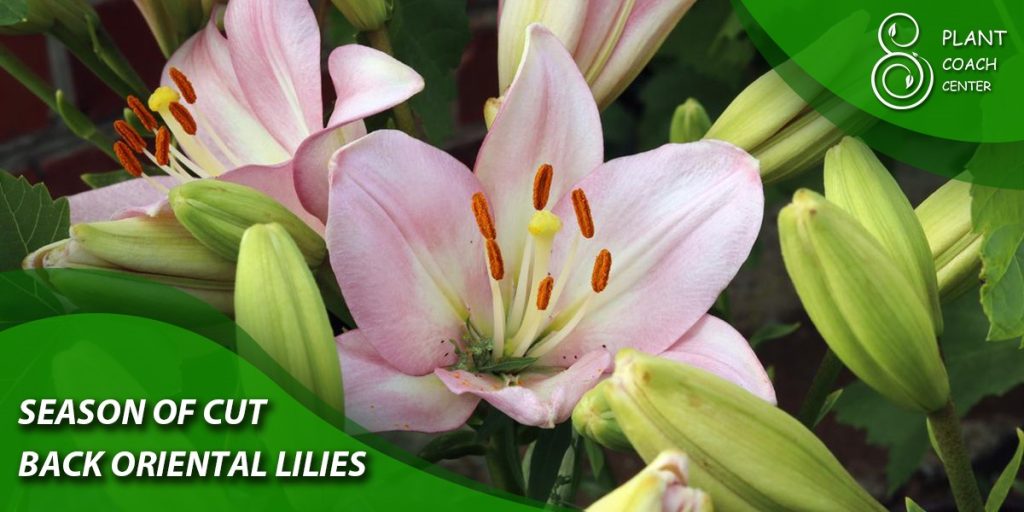
Common Problems and Solutions
Despite your best efforts, oriental lilies may encounter various problems. Understanding and addressing these issues promptly is crucial to maintaining their health and longevity.
Preventing and Treating Diseases in Oriental Lilies
Oriental lilies are susceptible to diseases such as botrytis blight, lily mosaic virus, and powdery mildew. To prevent these diseases, ensure proper spacing between plants, promote good airflow, and provide adequate drainage. If a disease does occur, use organic or chemical solutions specifically formulated for lilies to treat the problem effectively.
Managing Pests in Oriental Lilies
Common pests that affect oriental lilies include aphids, lily beetles, and slugs. Regularly inspect your plants for signs of infestation and employ natural or chemical pest control methods. Beneficial insects like ladybugs can also help control pests.
Troubleshooting Growth Issues in Oriental Lilies
Nutrient deficiencies, environmental factors, and improper watering can affect the growth of oriental lilies. Corrective measures include:
- Providing appropriate fertilization.
- Ensuring proper sunlight exposure.
- Maintaining adequate soil moisture.
- Addressing drainage issues.
Advanced Techniques in Plant Coaching
To take your plant coaching skills to the next level and maximize the potential of your oriental lilies, you can employ advanced techniques beyond basic pruning. These techniques involve more precise interventions and can further enhance your lilies’ growth, health, and overall beauty. Here are some advanced techniques in plant coaching:
Propagating Oriental Lilies Through Division
Dividing oriental lilies through bulb division is used to rejuvenate the plants, increase their numbers, and promote healthier growth. This technique is typically performed every few years, depending on the growth rate and size of the lilies.
By dividing the bulbs, you create space for new bulbs to develop, ensuring that each plant has enough room to grow and receive adequate nutrients. To perform bulb division, carefully dig out the clumps of bulbs, separate them into individual bulbs, and replant them at the appropriate depth in suitable soil. This technique rejuvenates the plants and allows you to propagate and expand your lily collection.
Advanced Pruning Techniques for Optimal Results
In addition to regular pruning, advanced techniques can be employed to shape the growth of your oriental lilies and promote bushier plants with more abundant blooms.
- Deadheading Spent Flowers: Deadheading is the process of removing faded or spent flowers from the plant. By regularly deadheading oriental lilies, you encourage continuous blooming and prevent the formation of seedpods. Removing spent flowers directs the plant’s energy towards producing new blooms rather than seed production.
- Pinching and Topping for Bushier Growth: Pinching and topping involve selectively removing the tips of the lily stalks to promote branching and bushier growth. This technique is typically done in the early stages of growth when the plants have reached a certain height. Pinching involves removing the tip of the main stalk, while topping involves cutting back the lateral branches. These techniques stimulate the development of additional lateral shoots, resulting in more compact and fuller plants with an increased number of flowers.
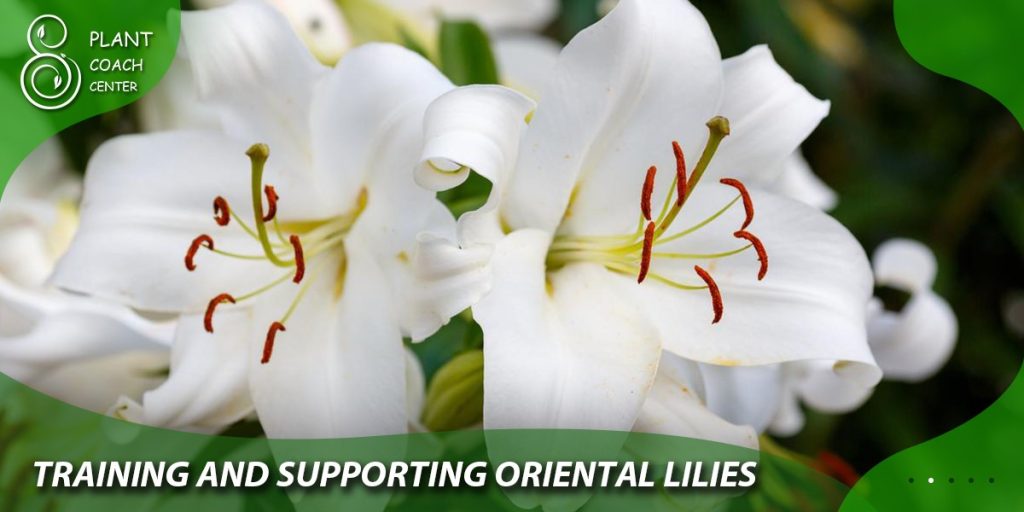
Training and Supporting Oriental Lilies
Training and supporting oriental lilies can help maintain their upright growth and prevent flopping or damage caused by wind or heavy rain. Supporting the stalks also enhances the overall aesthetic appearance of the plants. Here are some techniques for training and supporting oriental lilies:
- Staking and Support Systems: Staking involves inserting tall and sturdy stakes near the lilies and tying the stalks to them using soft ties or plant clips. This provides vertical support and prevents the plants from bending or breaking under their weight or external factors. Various support systems, such as grid-like structures or cages, can also support multiple plants in a compact area.
- Proper Techniques for Training Lily Stalks: To guide the growth of lily stalks, you can gently bend and secure them to a support stake or trellis. This technique is especially useful for oriental lilies with tall and top-heavy stalks. By training the stalks to grow along the support structure, you encourage straighter growth and reduce the risk of bending or breaking.
These advanced techniques in plant coaching require attention to detail and additional effort. Still, they can greatly enhance the growth, appearance, and overall health of your oriental lilies. Incorporating these methods into your plant care routine can elevate your gardening skills and help you enjoy even more stunning and resilient lilies.
Conclusion
Caring for oriental lilies requires attention to detail and a proactive approach. By understanding the growth cycle, recognizing signs that pruning is necessary, and implementing proper cutting-back techniques, you can ensure healthy, vibrant lilies year after year.
Addressing common problems such as diseases and pests will also contribute to their overall well-being. Remember, regular maintenance and pruning are key to maintaining the beauty and longevity of your oriental lilies, transforming your garden into a breathtaking floral paradise.
When is the best time to prune oriental lilies?
Early spring or late fall.
How often should I cut back my oriental lilies?
Once a year is typically sufficient.
Can I propagate oriental lilies through division?
Yes, dividing bulbs every few years helps rejuvenate the plants.


